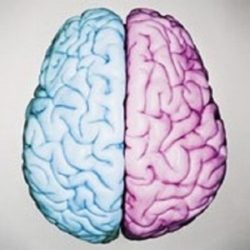In a recently published article and subsequent post to Hormones Matters, I proposed that a link exists between oral contraceptive use and the prevalence of autism spectrum disorders in children. In that post, I point out that widespread oral contraceptive use is a risk factor that has been largely overlooked in the biomedical literature. Because oral contraceptives were specifically designed to mimic natural human hormones and disrupt normal endocrine function to prevent pregnancy, I think that there is good reason for concern that the synthetic hormones may be initiating the harmful neurodevelopmental effects that lead to autism spectrum disorders in children of women who have been exposed to oral contraceptives.
I propose that ethinylestradiol (EE2) is the likely offender. EE2, one of the synthetic compounds found in oral contraceptives, is known to be an endocrine disrupting compound that is capable of impairing the endocrine system and offspring. Endocrine disrupting compounds have the ability to cause harm by negatively affecting sensitive hormonal pathways in both animals and in humans. And, recent studies have suggested that endocrine disruptors can impact human physiological processes within cells, tissues and organs by modifications in gene regulation. The environmental scientific community has repeatedly cautioned us about exposure to endocrine disruptors in the womb or early in life, strongly advising that exposure is likely to be linked with neurodevelopmental disorders that include reduced IQ, ADHD, and autism.
The World Health Organization issued the State of the Science of Endocrine Disrupting Chemicals 2012. In the report, they comment that we are just beginning to understand the mechanisms through which exposure to endocrine disruptors can modify the development of specific tissues that lead to increased vulnerability to diseases and disorders later in life. In addition, we are just now becoming aware of the critical roles that hormones play in neurodevelopment, including the neuroendocrine circuits that control physiology and sex-specific behavior that could result in behavioral and psychiatric conditions and disorders.
In the realm of environmental risk factors, the oral contraceptive hypothesis I first proposed is compelling. As a group of agents, there are explicit documented mechanisms through which oral contraceptives can impact the oocyte and/or the developing embryo. Additional reasons for considering the role of oral contraceptives and autism include:
- The exposure concentration is directly administered and pharmacologically effective.
- The exposure to the endocrine disruptor may be of larger magnitude than other environmental exposures that mostly occur through passive secondary means.
- A temporal correlation exists between the increased prevalence of oral contraceptive use and the increased prevalence of autism spectrum disorders over the last fifty years.
- The possibility exists that the effects of EE2 could intensify over generations due to transgenerational transmission of altered epigenetic programming.
- Continued exposure across generations could possibly impart sensitivity to developing autism spectrum disorders.
After making the oral contraceptive hypothesis, I called for epidemiological study as a first step toward proving the hypothesis. An epidemiological study investigates the patterns, causes and effects of health and disease conditions in defined populations. These studies can be expensive and labor intensive but are usually the first step toward proving medical hypotheses. Understanding the difficulty of performing these studies, I decided to review once more the only recent study of oral contraceptive use and the development of autism spectrum disorders in children. In this study, I found the epidemiological evidence I needed.
In 2011, Kristin Lyall published a study called, Maternal early life factors associated with hormone levels and the risk of having a child with an autism spectrum disorder in the nurses’ health study II. In this study that explored various early life factors, Lyall reported that,
“Overall, distributions of the factors under study were similar between the cases and non-cases. In crude comparisons in the full study (66,445 women), cases were more likely to have had an early age at menarche, a longer time until cycle regularity, a longer duration of pregravid OC use in years, and a higher BMI at age 18, though only the oral contraceptive duration association was significant (p < 0.05)”.
A significant finding of Lyall’s study is that oral contraceptive exposure presented a statistically significant risk factor for children subsequently developing autism spectrum disorders. This information provides epidemiologic evidence of the association between oral contraceptive use and autism. The fact that this is a large study and that oral contraceptive exposure is statistically significant leads me to believe that my hypothesis has merit. This finding must be replicated. In the meanwhile, I will continue to explore the association between oral contraceptive use and autism.
References
Kerdivel G, Habauzit D, Pakdel F (2013) Assessment and Molecular Actions of Endocrine-Disrupting Chemicals That Interfere with Estrogen Receptor Pathways. International Journal of Endocrinology 2013:501851. doi: 10.1155/2013/501851.
Latham KE, Sapienza C, Engel N (2012) The epigenetic lorax: Gene-environment interactions in human health. Epigenomics 2012;4:383–402. doi: 10.2217/epi.12.31.
Lyall K, Pauls DL, Santongelo L (2011) Maternal early life factors associated with hormone levels and the risk of having a child with an autism spectrum disorder in the nurse’s health study II. Journal of Autism and Developmental Disorders May;41(5): 618-27.
Martínez NA, Pereira SV, Bertolino FA, Schneider RJ, Messina GA, Raba J (2012) Electrochemical detection of a powerful estrogenic endocrine disruptor: ethinylestradiol in water samples through bioseparation procedure. Analytica Chimica Acta Apr 20;723:27-32. doi: 10.1016/j.aca.2012.02.033.
Strifert, K (2014) The link between oral contraceptive use and prevalence in autism spectrum disorder. Medical Hypotheses, Volume 83, Issue 6, December 2014, Pages 718–725.
World Health Organization (2012) State of the Science of Endocrine Disrupting Chemicals 2012 Summary for Decision-Makers. Available at: www.who.int/ceh/publications/endocrine/en/













There is an increase in people with transgender and other issues of sexual identity. There is a difference between the brain function of sexual behavior as identifying male or female and the biological and physiological determinants of gender,the sex chromosome and sexual organ development. Brain development begins within the first month of pregnancy. It is possible that some women using oral contraceptives are not aware that they are pregnant. Until they are aware of pregnancy they may be unknowingly exposing the fetus to high levels of these hormones. Also possible is the residual amounts are present in the first month and first trimester. Is it known long it takes to reach baseline levels after stopping oral contraceptive use?
Dear Ms. Strifert,
An associate professor from the University of Rochester forwarded the hormone matters link to me regarding birth control pills and autism incidence.
Thank you for investigating this matter. Although I am a lay person with no medical training, I have suggested this connection to many of my friends and colleagues over the past five years. It seemed to be a link worth exploring given the risks of other disrupters and what we do know about the multi-generational consequences of DES. Thank you again.
Dear Jann,
Thank you for your interest in my hypothesis! I find it absolutely fascinating. I am not surprised that you can imagine the connection between OC use and autism in children. It seems to make sense to some of us. And, you are so right to point to DES and the unfortunate transgenerational effects it caused. It took scientists 20 years to figure that one out, but the damage was already done.
I appreciate your taking the time to write to me. It is encouraging, Jann. I am grateful for your support.
Best regards,
Kim